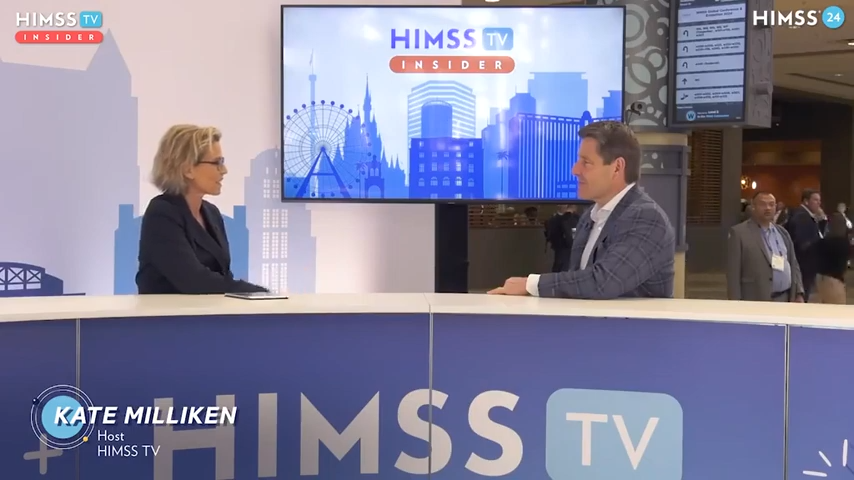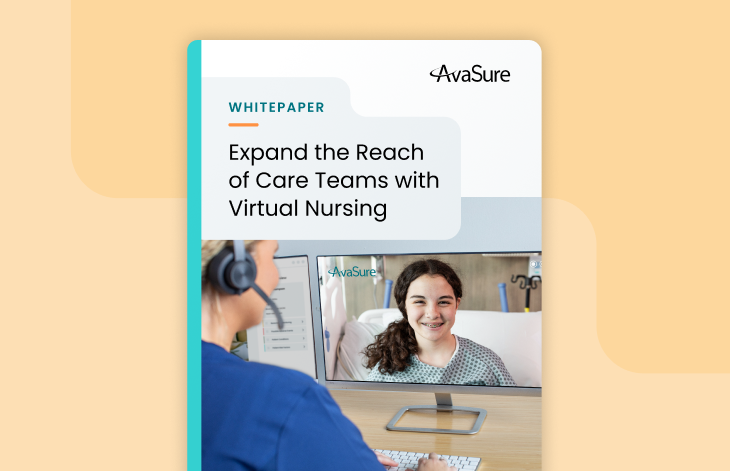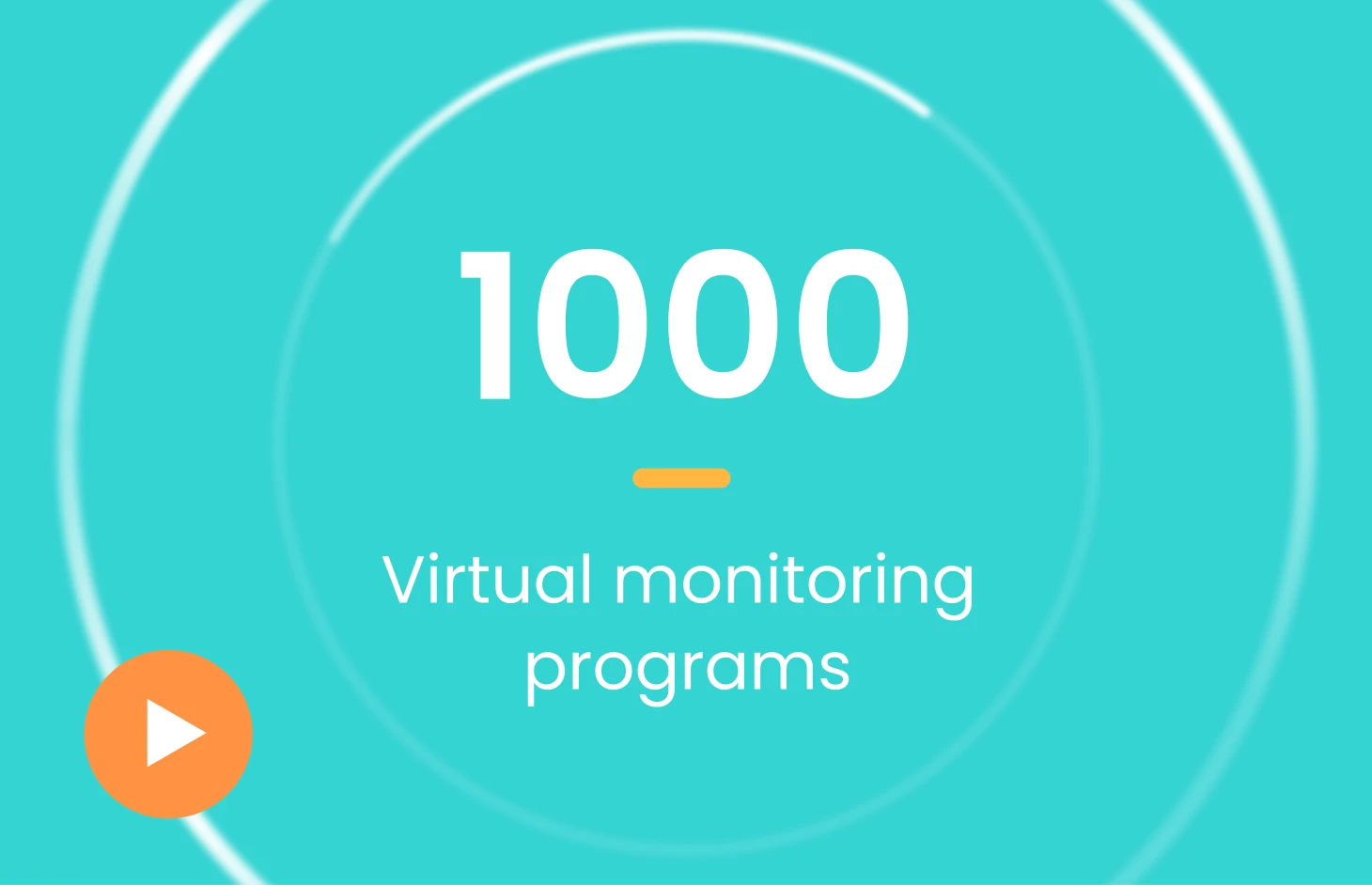
Adam McMullin, AvaSure CEO, talks about health systems that have reduced patient falls and increased sepsis recovery rate by using his company’s AI-driven virtual platform to assist on-site nurses.

Adam McMullin, AvaSure CEO, talks about health systems that have reduced patient falls and increased sepsis recovery rate by using his company’s AI-driven virtual platform to assist on-site nurses.

In the face of nursing shortages and escalating patient acuity, healthcare is in a perfect storm. Nurses are burdened with increasing demands and 52% are contemplating leaving the bedside. This environment is forcing hospital leadership to think differently about how technology can help create a new model of care delivery.
Virtual Nursing offers an augmented care environment where a virtual team supports bedside nurses and elevates hands-on patient care. AvaSure’s virtual care platform can assist staff with:
Download the use case study to learn how this model of care can help your health system reduce labor costs and support bedside nurses.

Healthcare workers are 5x more likely to experience workplace violence; new strategies are necessary to keep staff safe.
Workplace violence in hospitals is not an isolated incident, and the impact reverberates throughout the organization, affecting morale, job satisfaction, and ultimately, patient outcomes. Forty-eight percent of nurses reported an increase in workplace violence in 2022 and 80% of sitters report experiencing violence. It’s time to invest in new ways to protect healthcare’s greatest resource.
Hospitals using the TeleSitter® solution to prevent workplace violence have increased by 107% since 2019. With 24/7 monitoring to keep 1:1 sitters out of harms way and immediate intervention alarms, virtual sitting has emerged as a proven method to reduce workplace violence.
Download the use case spotlight to learn new strategies and methods to keep your staff safe.

Study in Western Journal of Nursing Research reveals virtual sitting is a valued resource with positive effects on nurse burnout
BELMONT, Mich., Nov. 15, 2023 — Virtual care adoption is increasing quickly in hospital settings, but do bedside clinicians view it as a positive change? Recent studies show that virtual sitting is a technological advancement that is viewed as a resource gain, not a resource drain. AvaSure, the market leader in acute virtual sitting and virtual nursing solutions, today announced the results of a new study published in the Western Journal of Nursing Research in August 2023. The study, An Experience Sampling Analysis of the Impact of Video Monitoring Technology and In-Person Sitters on Nurse Burnout: The Moderating Effect of Nurse Commitment and Mediating Effect of Emotional Labor (Kluemper, et al), supported by Providence and AvaSure, revealed that the use of virtual sitting technology, as opposed to one-to-one sitters, can be tied to reduction in nurse burnout especially for nurses who already feel less committed. Additionally, the study showed in-person sitting was viewed as a resource drain with negative effects on these nurses’ emotional labor and emotional exhaustion.
“Having insightful research into virtual sitting helps us alleviate burnout among our nursing staff and optimize the usage of all our resources to get the right care to the right patient at the right time,” said study co-author Emily Anderson, MSN, RN, PCCN-K, nurse manager at Providence Medical Center in Anchorage, AK. “This study supports our experience that virtual sitting improves the well-being of our nurses and helps maintain patient safety.”
While it is well-established in clinical literature that virtual sitting technology, compared with the use of in-person sitters, improves safety and reduces costs for hospitals, this study sheds light on the technology’s impact on nurses’ stress and well-being. The new study builds on previous research published in the Journal of Nursing Measurement in 2020, which surveyed 412 nurses on their attitudes toward virtual sitting. It demonstrated bedside nurses view virtual sitting as an increased resource to maintain patient safety and did not view one-to-one sitters as a safer alternative.
“This research represents a valuable contribution to the knowledge base on virtual sitting by being the first to demonstrate a reduction in nurse burnout associated with the use of virtual sitting technology,” said Lisbeth Votruba, MSN, RN, chief clinical officer of AvaSure. “As more and more peer-reviewed research on virtual sitting is published, it becomes clearer that nurses view the unproven practice of using one-to-one sitters as a resource drain and virtual sitters are a benefit. Nurses know that pulling valuable nursing assistants to sit with one patient around the clock is wasteful and leaves everyone else shorthanded.”
“While we already know from the existing literature that virtual sitting improves patient safety and saves hospitals critical financial resources, it is important to better understand how virtual sitting impacts nurse well-being,” said Don Kluemper, Ph.D., the study’s lead author and Professor of Management at Texas Tech University. “This new study supports the notion that virtual sitting reduces while one-to-one sitters worsen nurse burnout.”
The study used an experience sampling method and was conducted by surveying nurses twice a day for three weeks, resulting in 524 survey administrations provided by 74 nurses. The surveys included measures of daily video monitoring technology and in-person sitter use, emotional labor, emotional exhaustion, and nurse career commitment. Nurses participated from Providence Medical Center in Anchorage, AK and Providence St. Peter in Olympia, WA.
AvaSure was not involved in the study design, collection, analysis, interpretation of data, writing of the manuscript nor the decision to submit the manuscript for publication.
To learn more about the AvaSure TeleSitter® solution, click here.
About AvaSure
AvaSure provides the leading virtual sitting and virtual nursing solutions to systems with nursing and staffing shortages that are challenged to significantly reduce labor costs without sacrificing patient health outcomes. Recognized by KLAS Research as the leader in reducing the cost of patient care, AvaSure is the pioneer in providing best-in-class, video-based AvaSure TeleSitter® and TeleNurse™ solutions. As a trusted partner of more than 1,100 hospitals, AvaSure combines virtual safety attendants, virtual nurses and other providers on a single platform to enhance clinical care without placing any additional burdens on existing staff. To learn more about AvaSure visit www.avasure.com.
About Providence
Providence is a national, not-for-profit Catholic health system comprising a diverse family of organizations and driven by a belief that health is a human right. With 51 hospitals, over 1,000 physician clinics, senior services, supportive housing, and many other health and educational services, the health system and its partners employ more than 120,000 caregivers serving communities across seven states – Alaska, California, Montana, New Mexico, Oregon, Texas, and Washington, with system offices in Renton, Wash., and Irvine, Calif. Learn about our vision of health for a better world at www.Providence.org.
# # #
Media Contact:
Marcia Rhodes, Amendola Communications

This model of virtual nursing focuses on retaining an experienced nurse to oversee a cohort of complex patients, monitoring for early signs of adverse patient events, mentoring novice nurses and providing support to bedside care teams.
Hear from Lisbeth Votruba, RN, MSN, CCO of AvaSure and the team from UCHealth, Amy Hassell, RN, MSN, Director of Patient Services and Dr. Hemali Patel, ACMO of Inpatient Services. Amy and Dr. Patel work in the innovative Virtual Care Center at UCHealth which helps to support monitoring for patient deterioration, post rapid-response monitoring and more using the Expert Oversight model of Virtual Nursing. Hear about how their program started, outcomes they’ve experienced over the past year and roadblocks they’ve faced in scaling their virtual nursing efforts.
In this session, you’ll learn:
Presenters:
Amy Hassell RN, MSN, Senior Director of Patient Services, UCHealth Virtual Health Center
Dr. Hemali Patel, MD, ACMO, Inpatient Services, UCHealth
This free, six-part series will take place the last Thursday of each month featuring Lisbeth along with special guests and experts. Lisbeth will cover key topics, lessons learned from ongoing programs, and audience questions.

CIO’s and IT departments in health systems across the U.S. are charting the course towards a camera in every room, but how to get there isn’t as easy as it seems. Many think a camera is just a camera – and that off-the-shelf hardware will help them achieve their clinical goals. But AvaSure has learned from our 15+ years of experience in virtual care, that installing a camera is only one part of building a successful monitoring program.
Hear from the AvaSure Chief Technology Officer, Toby Eadelman, who helped build the AvaSure platform, and Clinical Implementation Manager, Wendy Pompa-Breen, RN, who helps customers build successful virtual care programs every day, on best practices for standing up a virtual care program that is results-oriented and outcome driven.
Learn how to lay the foundation today, for a successful camera-in-every-room program tomorrow. In this webinar you will:
Presenters:
Toby Eadelman, AvaSure Chief Technology Officer
Wendy Popma-Breen, BSN, BS, RN, AvaSure Manager of Clinical Implementation Services

UCHealth is a nonprofit healthcare organization based in Colorado made up of 12 hospitals across the state. UCHealth had already implemented AvaSure’s TeleSitter® for patient safety and VerifyTM for virtual ICU. Here, they looked at expanding the use of these technologies to create a program they call Virtual Deterioration. Keep reading to learn more about this new case use.
Looking to identify deteriorating patients sooner
The organization had a new use case for virtual care, a program called Virtual Deterioration. Through this virtual platform, they were looking to identify patients who were deteriorating in the hospital sooner in order to provide rescue and treatment faster, enhancing better overall outcomes.
AvaSure reduced Code Blues by as much as 70%
Early outcomes using AvaSure to watch ICU patients for deterioration have shown significant promise in reducing cardiac arrests by as much as 70%. Additionally, UCHealth has seen an increase in rapid response events (26%-86%), while Code Blue rates are plummeting (down 25%-70%), mostly in high-risk areas. UCHealth is also tracking whether patients remain in their current environment instead of being transferred to a higher level of care after an event.
“And so if you are considering any sort of hybrid approach from, for example, a clinical command center or nursing workflows, you want to have a great platform that you feel your staff can use and interact with seamlessly and with ease.”
— Amy Hassell, RN, UCHealth

There’s no telling what type of illness surges hospitals will see this year: Take lessons from Jefferson Health’s nurse-led virtual nursing pilot program here.
A surge in respiratory viruses over the fall and winter months placed immense capacity and resource strain on hospitals. This year, they can’t afford to wait and see what the next respiratory virus reason might bring.
In this session, leaders from Philadelphia-based Jefferson Health will share how a nurse-led approach helped the organization meet staffing demands during this past pediatric surge in respiratory syncytial virus cases. Colleen Mallozzi, RN, senior vice president and chief nursing informatics officer at Jefferson Health, and Laura Gartner, DNP, RN, clinical informatics director at the health system, will share how the team quickly expanded an existing virtual sitting program into a virtual nursing pilot to meet patient care and staffing demands.
Learning points:
Presenters:
Colleen Mallozzi, MBA RN, SVP, Chief Nursing Informatics Officer, Jefferson Health
Laura Gartner DNP, MS, RN, NEA-BC, Division Director Clinical Informatics, Jefferson Health
Lisbeth Votruba, MSN, RN, Chief Clinical Officer, AvaSure

Join AvaSure Chief Clinical Officer, Lisbeth Votruba, MSN, RN, for Session 2! In this on-demand webinar, you’ll learn:
Presenters:
Lisbeth Votruba, MSN, RN, Chief Clinical Officer, AvaSure
Wayde Batt, MSN, NEA-BC, BC-RN, Patient Services Manager, NSICU/Virtual Nursing, UNC Health Rex
Laura Gartner, DNP, MS, RN, RN-BC, NEA-BC, Director Clinical Informatics, Jefferson Health